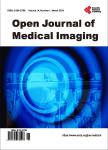Sociodemographic and Scanographic Aspects of Primary Bronchopulmonary Cancer in a Hospital in Mali
Sociodemographic and Scanographic Aspects of Primary Bronchopulmonary Cancer in a Hospital in Mali作者机构:Department of Medical Imaging of the Mali Hospital Bamako Mali Department of Thoracic Surgery of the Mlai Hospital Bamako Mali Pediatric Unit at the Common Reference Health Center VI Bamako Mali Department of Medical Imaging of the CHU of Kati Bamako Mali Bamako Infirmary Hospital Bamako Mali Medical Imaging Department of CHME Luxembourg Bamako Mali Department of Gynecology of the Mali Hospital Bamako Mali
出 版 物:《Open Journal of Medical Imaging》 (医学影像期刊(英文))
年 卷 期:2021年第11卷第4期
页 面:104-114页
学科分类:1002[医学-临床医学] 100214[医学-肿瘤学] 10[医学]
主 题:Sociodemographic and Scanographic Aspects of Primary Bronchopulmonary Cancer in a Hospital in Mali
摘 要:Summary: A malignant tumour that develops from the bronchial epithelium and then invades the lungs. It ranks third after colorectal and breast cancer. In Mali, computed tomography (CT) is the main imaging tool used at all stages of treatment. We had initiated this study with the objective of specifying the place of CT in the diagnosis of primary bronchopulmonary cancer at the hospital of Mali. Method: This is a prospective and descriptive study conducted by the Medical Imaging and Thoracic Surgery departments at Mali Hospital from March 2014 to February 2015. All the patients who have benefited from a CT scan and presenting at least one histologically confirmed bronchopulmonary tumor were included. Results: We were recruiting 60 patients with bronchopulmonary cancers out of 500 referred for a thoracic CT scan performed, a frequency of 12%. There was one male patient with a sex ratio of 4H/1F. The average age was 60 years. The history of smoking was 85%. The symptoms were dominated by general condition (63.33%), cough (25%) and haemoptysis (58.33%). CT scans were performed in all patients. The lesions were located more in the lower lobes (71%). The tumours were: heterogeneous tissue density (70%), spiculated contours (80%), and the histology was more non-small cell carcinoma. Conclusion: The incidence of bronchopulmonary cancer is very high and its prognosis is poor at an advanced stage. The evaluative role of CT and biopsy guidance has given it a place of choice in its management. The diagnosis of certainty remains histology.



